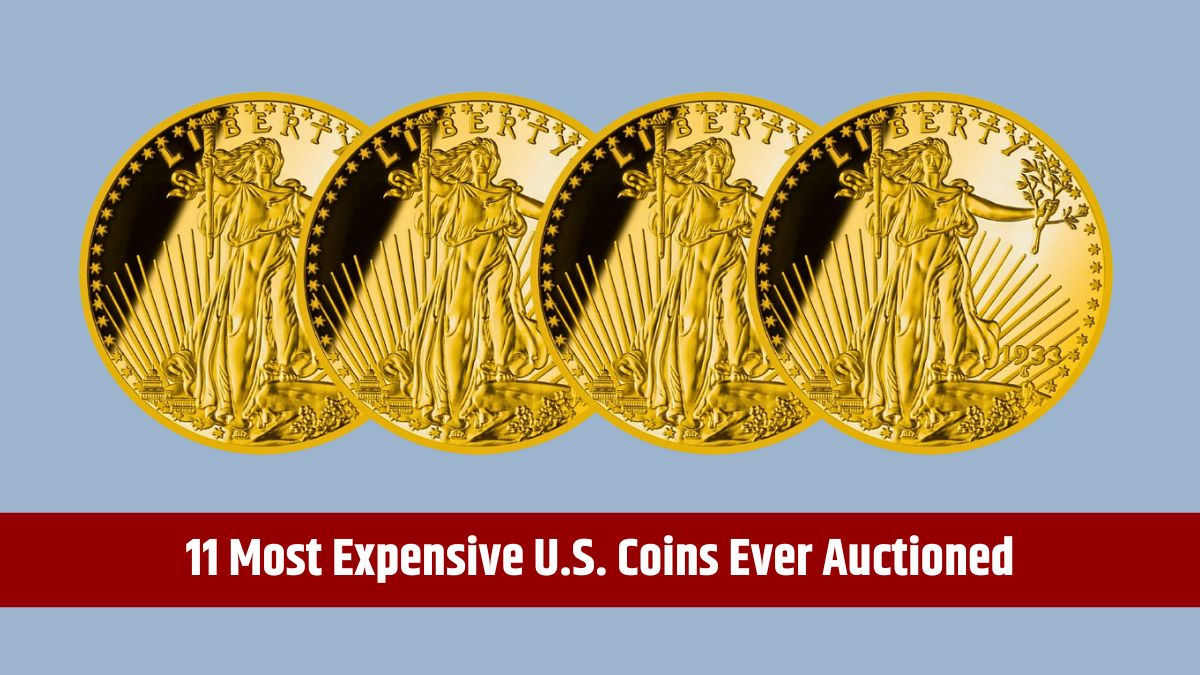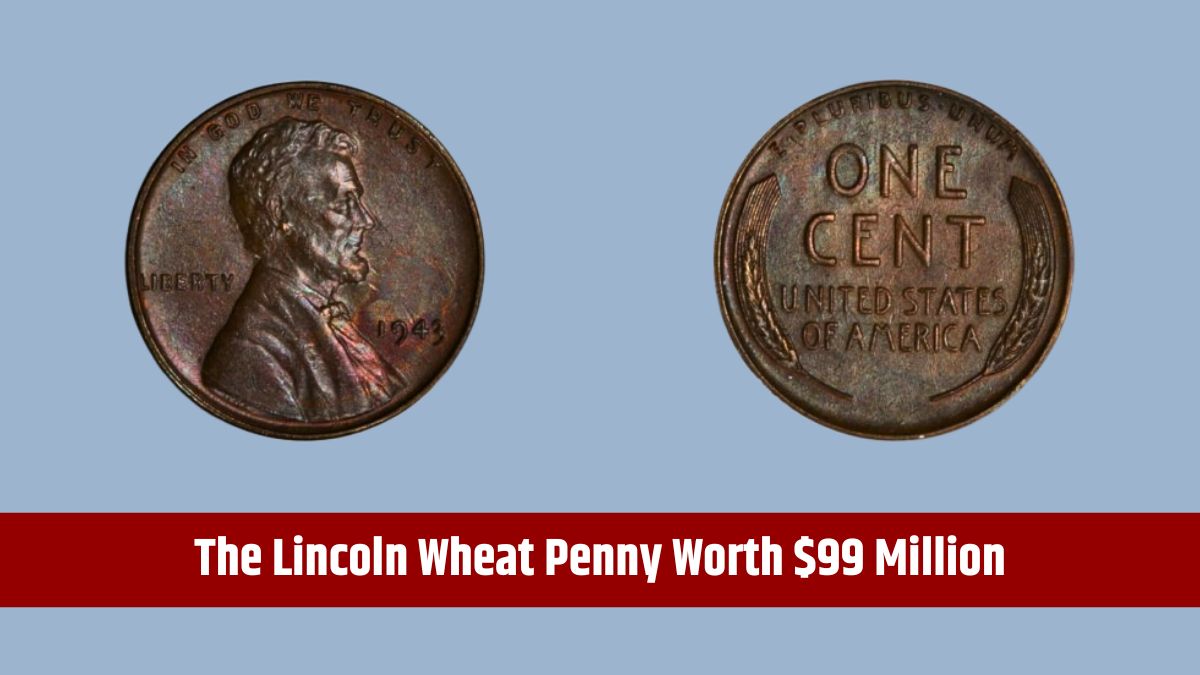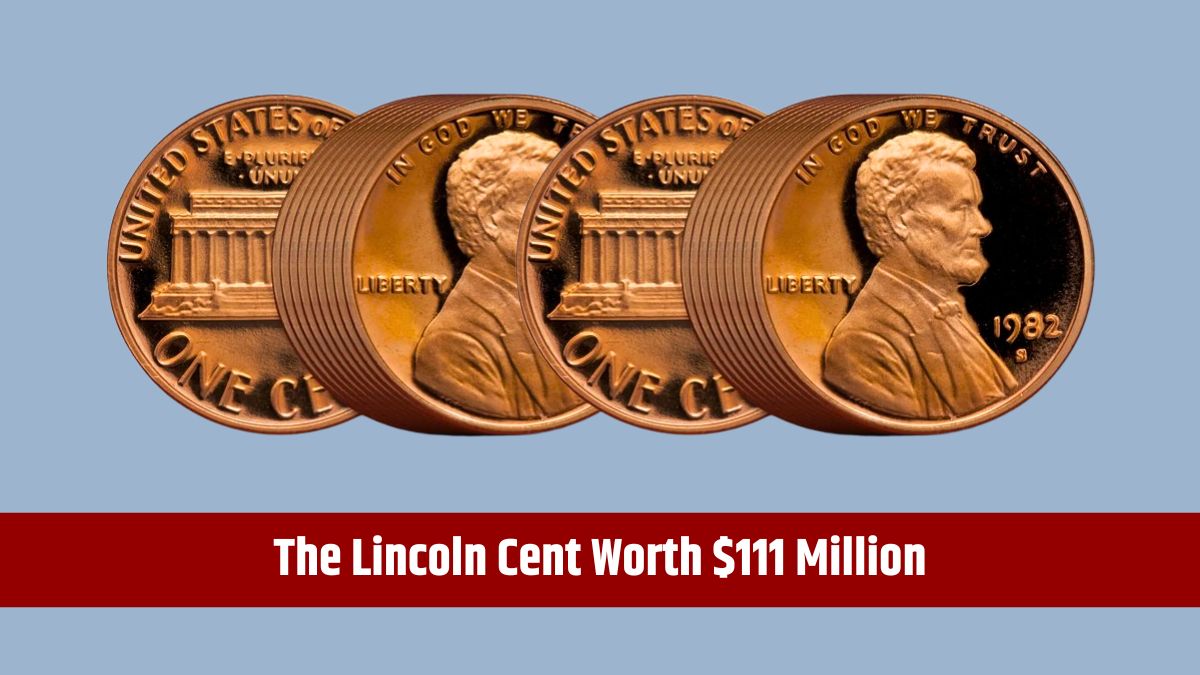The world of coin collecting is a journey into history, where rare coins tell tales of America’s past. Some coins are not just metal—they’re pieces of art, craftsmanship, and intrigue. Here’s a look at the 11 most expensive U.S. coins ever sold and the stories behind their extraordinary value.
Table of Contents
1933 Saint-Gaudens Double Eagle
- Price: $18.9 million (2021)
- Story: Originally a $20 coin, its value soared when the U.S. abandoned the gold standard, and most of these coins were melted down. Few remain, making it the crown jewel of American numismatics.
1794 Flowing Hair Silver Dollar
- Price: $10 million (2013)
- Significance: One of the first silver dollars minted in the U.S., this coin symbolizes the young nation’s independence with its depiction of Lady Liberty’s flowing hair.
1787 Brasher Doubloon
- Price: $9.36 million
- Remarkable Feature: Created by goldsmith Ephraim Brasher, this early American gold coin is a masterpiece of craftsmanship and rarity.
1822 Capped Bust Half Eagle
- Price: $8.4 million
- Unique Factor: Only three examples exist, with two housed in the Smithsonian, leaving one in private hands—an exceptionally rare status.
1804 Draped Bust Silver Dollar
- Price: $7.7 million
- Intrigue: Known as the “King of Coins,” it wasn’t minted in 1804 but in the 1830s for diplomatic gift sets, adding a historical twist.
1861 Paquet Double Eagle
- Price: $7.2 million
- Distinction: A unique design variation and only two surviving pieces make this coin incredibly desirable among collectors.
1913 Liberty Head Nickel
- Price: $5.26 million
- Legendary Status: With only five known examples, this nickel is a true rarity in American coinage.
1794 Silver Center Cent
- Price: $2.6 million
- Innovation: Featuring a silver plug in the center, this coin was an experiment to match metal value to face value, showcasing early American ingenuity.
1793 Chain Cent
- Price: $2.35 million
- Symbolism: As one of the first U.S. pennies, its chain design represented the unity of the states.
1804 Gold Eagle
- Price: $5.28 million
- Connection: Like the 1804 Silver Dollar, this coin was minted decades later for diplomatic purposes but bears the 1804 date.
1894-S Barber Dime
- Price: $1.99 million
- Rarity: Only 24 were minted, and just nine are known today, making this small silver coin exceptionally valuable.
What Drives Value?
Several factors contribute to the extraordinary prices of these coins:
- Historical Significance: Links to major events or eras in U.S. history.
- Rarity: Limited surviving examples.
- Condition: Well-preserved coins command higher prices.
- Unique Stories: Creation circumstances and provenance add intrigue.
- Collector Demand: High interest from wealthy collectors and investors.
The Market Outlook
As demand for rare coins grows and their supply remains finite, prices are poised to rise further. These coins are not just investments—they’re physical connections to American history and craftsmanship.
Each rare coin tells a unique story, from early minting experiments to pivotal historical moments. Collecting coins like these isn’t just about monetary value—it’s about preserving history and celebrating artistry. Even if most collectors never own these treasures, their stories inspire appreciation for the broader world of numismatics.
FAQs
What is the most expensive U.S. coin?
The 1933 Saint-Gaudens Double Eagle, sold for $18.9 million.
Why is the 1804 Silver Dollar valuable?
Its rarity and historical use in diplomatic gift sets.
How many 1822 Capped Bust Half Eagles exist?
Only three, with two in the Smithsonian.
What makes the 1894-S Barber Dime special?
Only 24 were minted; nine survive today.
What factors drive rare coin values?
Rarity, condition, historical significance, and collector demand.






